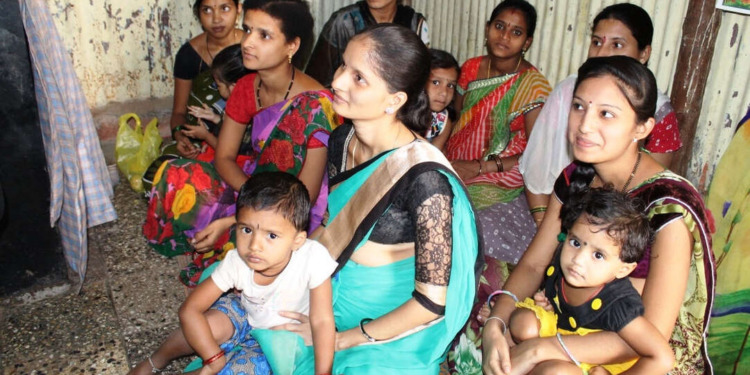Worldwide, the views of many about India, the world’s largest democracy, are largely focused on its weaknesses, corruption, governance, and poverty. This perspective is often accompanied with doubts about whether foreign assistance over an extended period of time makes a difference. Yet, the evidence on the ground tells a different story: Two recent studies reveal notable success in reproductive health and nutrition.
One, a recent analysis of the reproductive health aspects for women using five national surveys in India from 1993-2021, found that there has been incredible improvement, describing it as a “revolution in reproductive behavior that enhances the reproductive health of women”(bolding added).
Covering an even longer period, going back to over 50 years ago, there is similarly positive evidence for nutrition progress.
In both instances, it is worthy to note that external financial and human resources played critical roles – more evidence that international cooperation works, contrary to the contentions of those skeptics of the value of aid.
That reproductive health and nutrition improvements happened over an extended period of time is particularly impressive and needs wider recognition, especially in light of the myriad of problems the country faced then and faces now.
To put these findings in context, it helps to take a step back and examine the situation in India.
India’s challenges, from pollution to poverty, as millions, especially in rural areas, have no access to healthcare
Over 1.4 billion people live in India, a region severely affected by extreme heat and drought, and recently experiencing the worst of COVID-19.
A brief overview of some major challenges provides insight into why much of what we “think” we know about India is negative. For example:
- 700 million people have no access to toilets at home. Slum areas do not have toilets. Many rural schools also have no toilets, so parents do not send their kids, especially girls, to school.
- 80% of the poor in India live in Rajasthan, Madhya Pradesh, Uttar Pradesh, Bihar Jharkhand, Orissa, and Chhattisgarh, the poorest areas.
- Pollution is a major concern, with degradation of land, depleting natural resources, and loss of biodiversity. Untreated sewerage is the major cause of water pollution. According to the World Air Quality report published in 2021, Three Indian cities (Bhiwadi, Ghaziabad, and New Delhi) featured in the Topmost polluted cities in the World.
- 50% of all villagers have no access to healthcare providers.
- More than 74% of people were counted as literate in the last census, which is widely seen as an underestimate. Further, there is a wide disparity between rural and urban areas and the male and female populations.
But There Has been Genuine Progress in Two Areas
The picture described above is representative of India as we know it today and as it was over half a century ago. Yet progress was made:
What has happened in that time with regard to reproductive health and nutrition, is simply amazing. Stepping back and seeing how much progress has been made, showcasing these successes, and how the country, hand-in-hand with external support, made such great progress is a story in need of telling.
Let’s take a closer look.
Reproductive Health and Related Issues
The reproductive health of women in India has improved through truly historic changes, with large advances for the status of women and for alternative roles to childbearing.
Briefly counting the changes:
- Women are initiating marriage and first births later;
- They are having fewer children and fewer child deaths;
- A smaller proportion of their reproductive years are occupied by pregnancies and births, and
- there are probably fewer abortions as contraception has taken hold and more births are wanted.
In India, childbearing has been transformed, whether measured by the total fertility rate, by the age-specific fertility rates, or by fewer high-order births.
For the period of 28 years covered by the reproductive health analysis, from 1993 to 2021, “the infant mortality rate fell by more than half, from 78 to 34 infant deaths per 1000 live births, whereas the under-five mortality rate fell by nearly two thirds, from 109 to 40 under-five deaths for every 1000 live births.” (bolding added)
Below is a sampling of the rich data contained in the study:
- The total fertility rate fell by 41 percent from 3.4 to 2.0 birth per woman of reproductive age;
- Fertility decreased in the age group 15-19 years by nearly 70 percent whereas it decreased by over 28 percent in the age group 20-24 years; 28 percent in the age group 25-29 years; 48 percent in the age group 30-34 years;
- Higher order births (later children) now decreased which means significantly fewer numbers of births by any one woman;
- With the increase in contraceptive use, some births have been postponed, so the interval from the previous birth is lengthened, and the median birth interval rose from 31.6 to 32.7 months;
- With respect to marriage over the nearly three decades covered by the study, there was a transition from very early female marriages, even earlier than 15 years of age, to females marrying in their late teens and early twenties.
Antenatal care grew from about three-fourths in 2006 to almost 94 percent in 2021, increasingly provided by doctors. The proportion of pregnant women receiving parasite drugs went from less than 4% to over 31 percent, while the proportion of women receiving iron tablets grew from 65 to 87 percent.
Improving child, infant, and maternal nutrition
Described below are examples of the benefits to different cohorts resulting from long-term attention and commitment to better nutrition. Perhaps for the international community, the most significant innovation in the Indian program was the employment of development planning techniques to solve nutrition problems.
The first attempt to evaluate alternate cost solutions was in a comprehensive nutrition plan launched in 1968, and a much broader systems approach was started in 1970 in the State of Tamil Nadu.
That these policies continue to take hold were reflected in National Family and Health Survey (NFHS) results that showed regular progress.
The most recent survey found that 36 percent of children under the age of five years are stunted (too short for their age), 19 percent are wasted (too thin for their height), and 32 percent are underweight, with three percent of children overweight. Each of these percentages represents significant improvements from what they were in the twentieth century or even just a few years ago.
There has also been notable progress with respect to infant and young child feeding behaviors and consumption.
For example, in 2019-2021 compared to 2015-2016, exclusive breastfeeding of children under six months increased from 55 percent to 64 percent; 94 percent of household salt was iodized; 47 percent of children aged 6-23 months consumed more foods rich in vitamin A; 37 percent of children aged 6-59 months were given vitamin A supplements; 30 percent given deworming medication, 27 percent iron supplements.
The impact of government nutrition policies and programs
Over the years the Government launched major policy initiatives that brought together multiple ministries to tackle nutrition. It approved and financed new programs to improve the health and nutrition status of women and children.
Examples include:
- 2018 National Nutrition Mission that is known as “The Prime Minister’s Overarching Scheme for Holistic Nutrition”;
- Maternity Benefit programme that provides innovative conditional cash transfers;
- Anemia Free India programme that provides iron-folic acid supplementation and deworming to contain the persistent burden of disease from anemia.
These programs complemented long-existing supplement efforts such as the Integrated Child Development Service scheme and the Mid-day Meal programme.
In addition, the public sector supported alternative nutrition financing and the widening availability of important new innovations such as double fortified salt with iodine and iron considered a major homegrown Indian success in showing iron and iodine can be brought to large numbers of people.
This latter innovation is of major importance, given that micronutrient deficiencies (including iodine and iron deficiency) are a global health problem affecting one-third of the world’s population. Salt is an ideal carrier for food fortification as it is universally consumed at equal rates, independently of economic status.
There remains much to be done to improve the nutritional status of vulnerable populations. However, looking at where India was in the past compared to today, there has been enormous progress.
As long as there is continuing and sustained commitment of government and non-governmental stakeholders, and willingness on the part of the people to use public health facilities and participate in health programs, the nutritional status of future generations begins to look more promising.
India’s Lessons for the rest of the World
The progress reported here is “just the facts, Maam.” They result from India’s own efforts, joined by external committed expertise and resources, in making significant improvements in the lives of the most vulnerable.
This is certainly something to be proud of, garnering the attention of decision-makers in India but also of the development community and the public at large.
To showcase that good things happen when there is a sustained effort over an extended period of time, by those in-country and the external community, sets an example for the rest of the world.
Editor’s Note: The opinions expressed here by Impakter.com columnists are their own, not those of Impakter.com. — In the Featured Photo: Mothers and children from slums, India. Source: From the Give India.org “Adopt a pregnant mother from an urban slum” campaign by Foundation for Mother and Child Health










